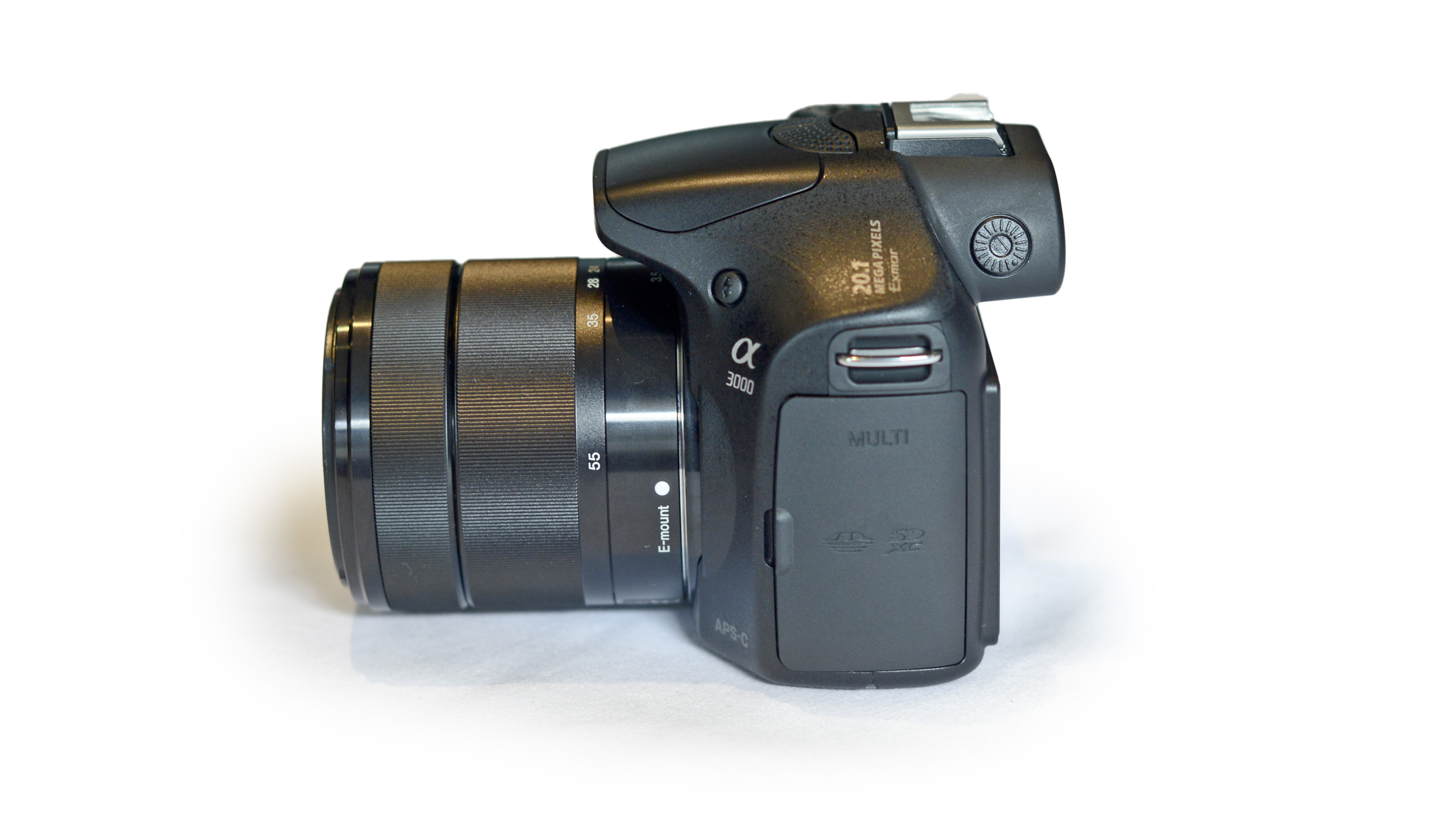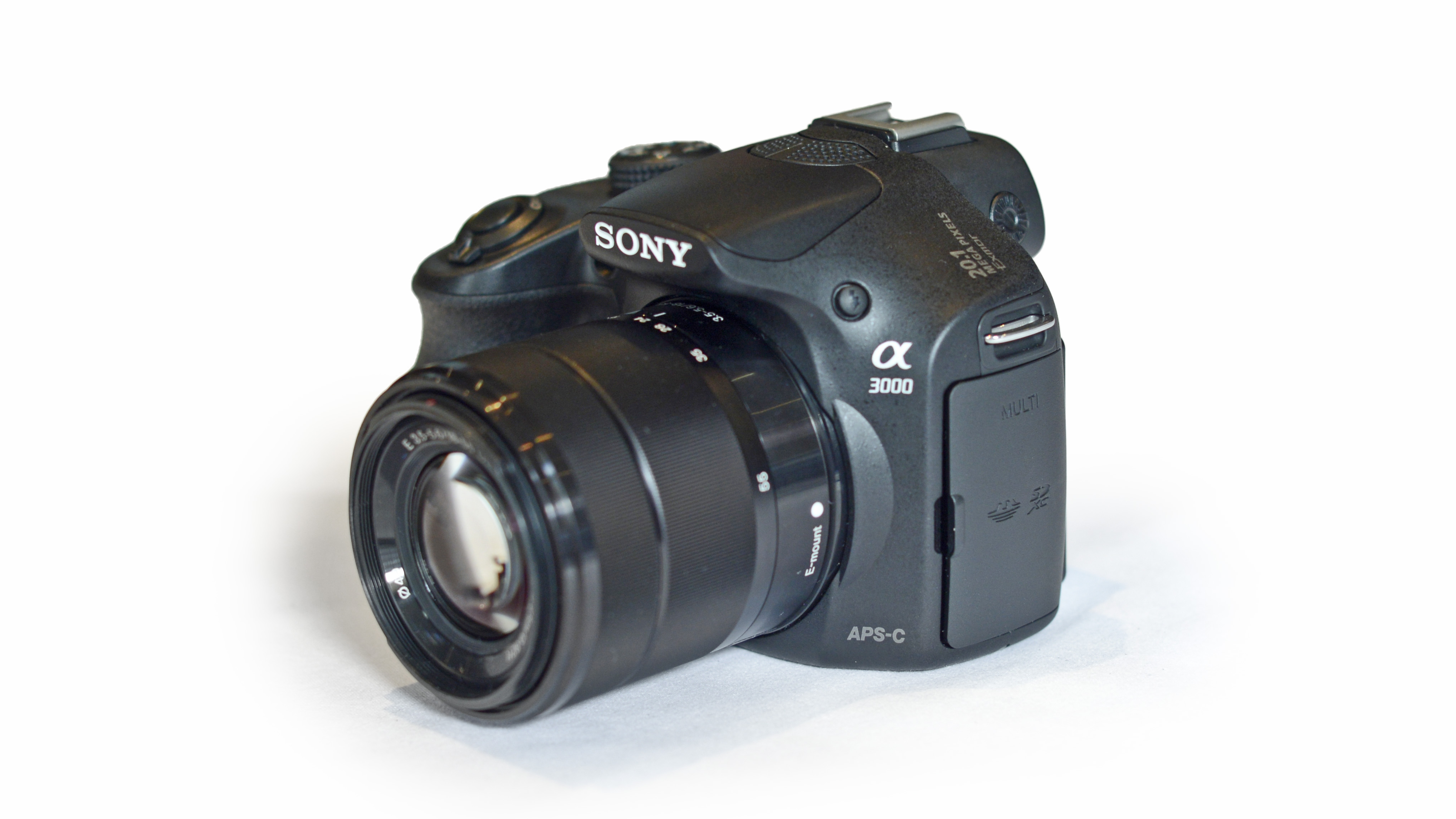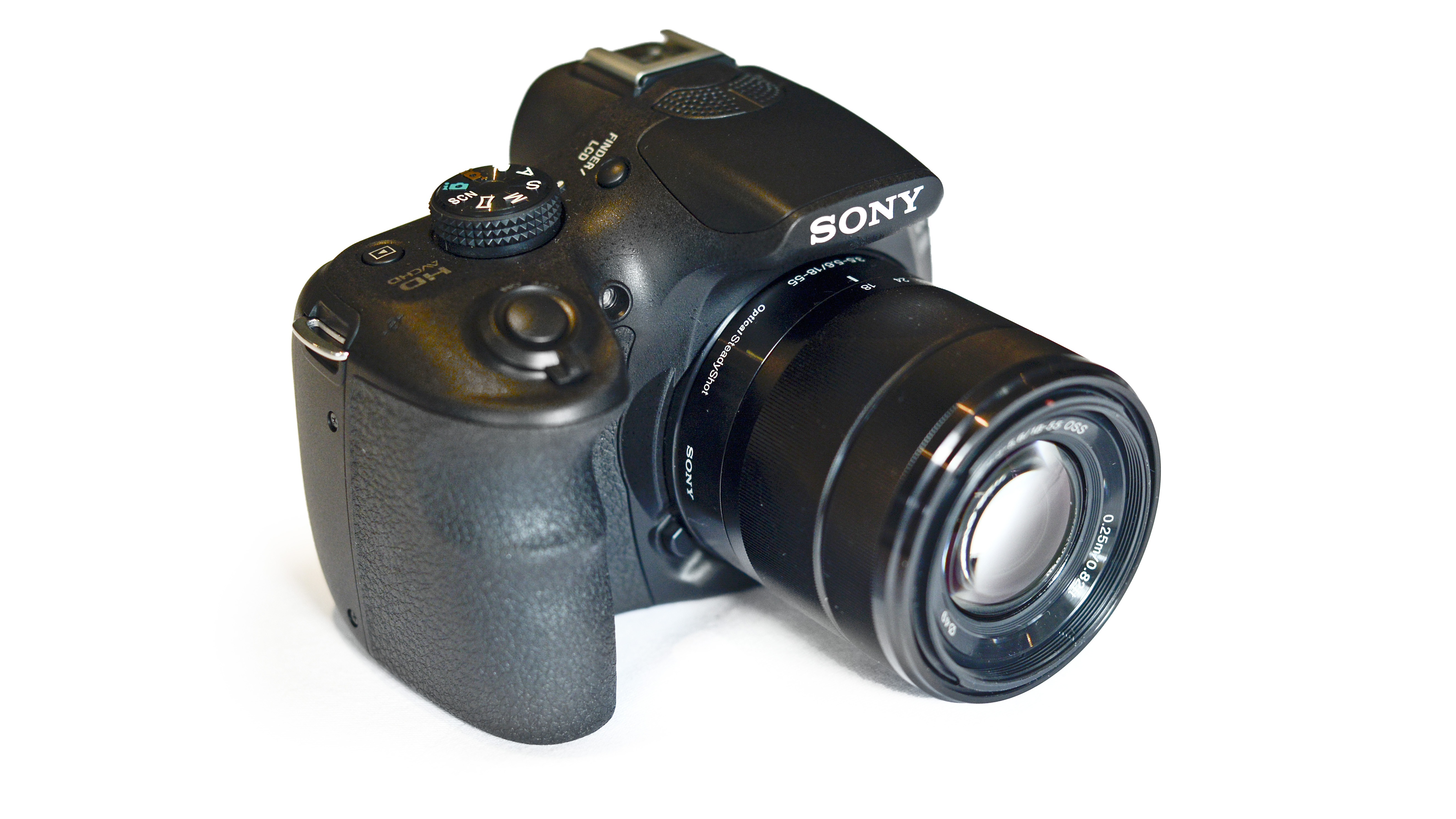Why you can trust TechRadar
From the exterior, the Sony Alpha 3000 looks like an entry-level DSLT camera, such as the Sony Alpha a58, albeit a little smaller.
It has a chunky grip on the right, which makes it very easy to use one handed. As standard, the camera is supplied with an 18-55 lens, and unlike the 16-50mm kit lens found on cameras such as the Sony NEX-3N, this is also quite large.

On top of the camera is a mode dial for accessing the different exposure modes that the Sony Alpha 3000 has to offer, including fully automatic and semi-automatic (aperture priority and shutter priority) and scene mode and panoramic mode.
The number of buttons on the camera is relatively low. On top of the camera you'll only find the shutter release, EVF/LCD screen button and the playback button. On the back of the camera, as is now becoming common for Sony cameras, a couple of the buttons are customisable depending on which settings you use most often.
By default, one of the buttons accesses the main menu. The camera uses the standard NEX menu system, rather than the Alpha system. We've found that the NEX system can be a little more frustrating to use than the Alpha system in recent times, so we'd have preferred to see the Alpha menu here.
Another default option is for the right directional key to access ISO. But you can change this to access a kind of quick menu, which includes sensitivity. It's a useful menu which can be customised to include the settings that you find yourself changing the most often, such as Creative Style or White Balance.
It will be interesting to see if Sony chooses to streamline its menu systems now that the NEX name has been dropped. Hopefully the company will see fit to keep the best elements of both if so.
Sign up for breaking news, reviews, opinion, top tech deals, and more.

A scrolling dial on the back of the camera is used for navigating through settings while in the menu, or altering aperture or shutter speed when in standard shooting mode. Unlike most Alpha cameras, there is no dial on the grip for changing these settings.
As there's no touchscreen, changing the AF point requires a little more effort. First of all you need to set the autofocus area to flexible spot in the main menu. This will make one of the customisable soft keys the access button for changing the focus point. Press this and then scroll around the frame using the scrolling dial which doubles up as a four-way navigation pad. It's not the quickest of operations, and can be a little frustrating if you want to quickly capture some fast-moving action.
In order to shoot a panoramic image, you'll need to select the appropriate mode on the dial. Then all you'll need to do is sweep the camera across the scene while holding down the shutter release button. It's an easy enough process, with the resulting image being stitched together in camera. It is however fairly difficult to tell which part of the scene is in the frame, as the composing window displays more than the finished image.
On the back of the camera is an electronic viewfinder, which is a nice addition for NEX cameras, but is of course standard for Alpha cameras. Unfortunately there is no sensor on the eye-piece for detecting when the camera is lifted to your eye, meaning that you'll need to switch between the LCD and EVF manually - something which can quickly get tiresome and doesn't make for a particularly seamless transition. The button is also on top of the camera rather than on the back, which is a little awkward to reach.
Because there's not a great deal of space on the front of the Sony Alpha 3000, accessing the lens release button can be a little tricky, taking some getting used to for the best angle.

Amy has been writing about cameras, photography and associated tech since 2009. Amy was once part of the photography testing team for Future Publishing working across TechRadar, Digital Camera, PhotoPlus, N Photo and Photography Week. For her photography, she has won awards and has been exhibited. She often partakes in unusual projects - including one intense year where she used a different camera every single day. Amy is currently the Features Editor at Amateur Photographer magazine, and in her increasingly little spare time works across a number of high-profile publications including Wired, Stuff, Digital Camera World, Expert Reviews, and just a little off-tangent, PetsRadar.
